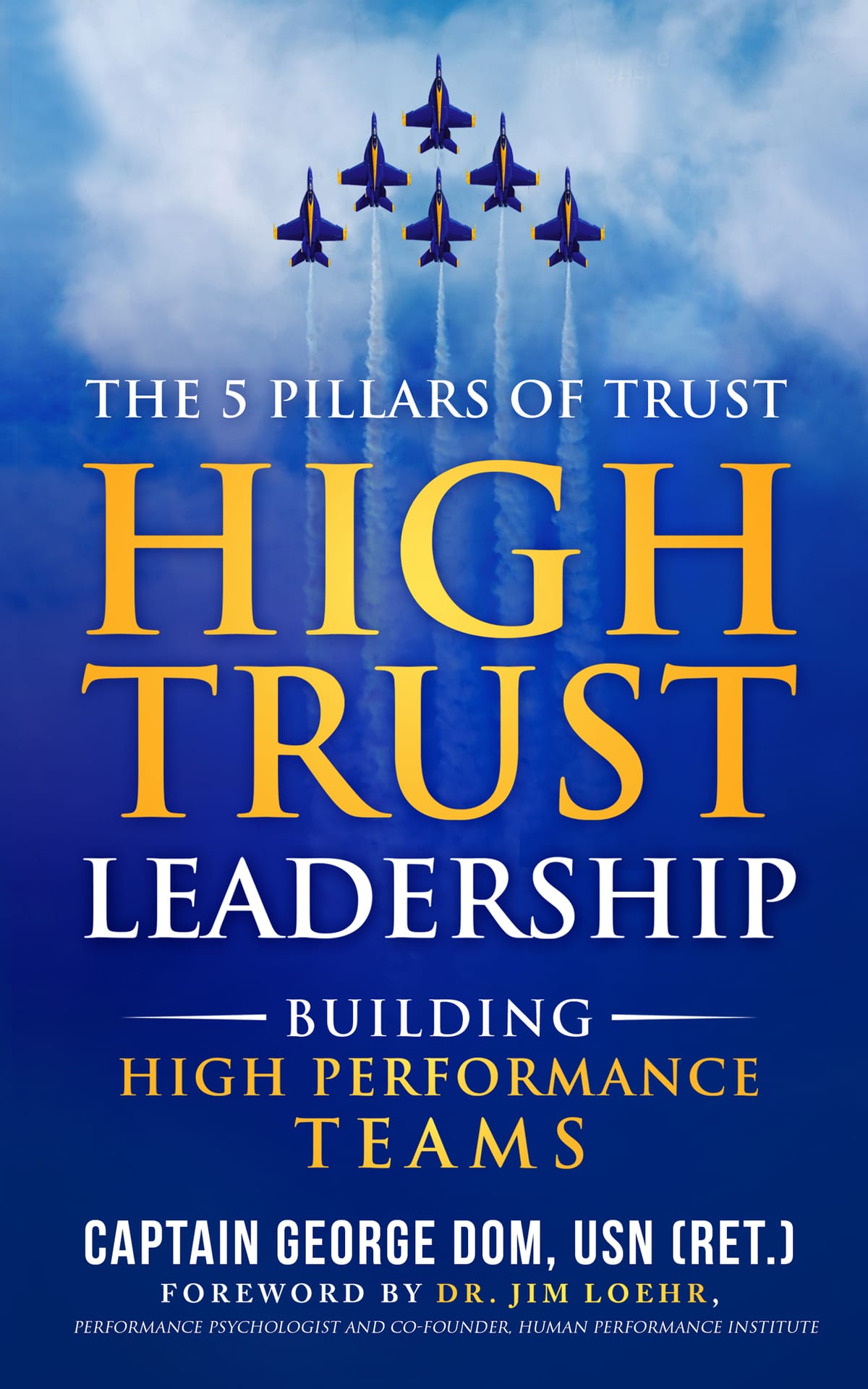High-Trust Leadership: Building High Performance Teams (The 5 Pillars of Trust)

Now available at major booksellers worldwide (ISBN: 9781629672793) including:
- Amazon
- Barnes & Noble
- Bookshop (supporting local bookstores)
Who are the Blue Angels? Imagine six FA-18 fighter pilots – four flying together in perilously close aerobatic formations while two solo pilots conduct a series of violent maneuvers with near head-on collisions at 1,000 knots of closure – operating in complete unison, literally placing their lives in each others’ hands every day throughout the year. This extreme performance occurs safely, up close and personal, below the skyscrapers, down at treetop level, in front of millions of spectators annually. Buffeted by winds and dueling with hot summer afternoon thermals, these six pilots – and their traveling support team – push their limits every day: growing, learning, and adapting as they seek perfection.
But the Blue Angels fail in the fundamental way that all world-class performers fail – they make it look too easy. And while they are an iconic example of the highest level of human precision and teamwork, the spectators miss a profound insight: a team of common people can achieve far beyond what they originally believe is possible if they fully commit to achieving and sustaining an uncommon level of trust.
For two years I was the commanding officer and flight leader of the Blue Angels.
Most people assume that trust is a straightforward by-product of gathering a group of smart, talented, and accomplished people together. That works to some extent, but it takes far more and doesn’t happen naturally on its own. There are many examples of highly skilled individuals who made up dysfunctional and underachieving teams. Trust requires deliberate work with daily attention and nurturing. Just ask any successful leader of a champion team.
In every high-performing Navy team I served – aircraft carrier air wing, strike-fighter squadron in combat, the Topgun Staff, and the Blue Angels – trust was a strategic imperative, the secret to our success, and the basis for all personnel decisions. We recruited for trustworthiness; we trained to build it every day; if you had it you were accepted, rewarded, and promoted; if you lost it and couldn’t regain it rapidly you were sidelined or gone.
The lessons I share about how to build a culture of high-trust are far from the esoteric prescriptions of academics and 9-to-5 leaders. Mine are born out of the extreme and unforgiving environments of long deployments on aircraft carriers at sea, deadly air combat missions, and high-speed, close-formation jet aerobatics at very low altitudes. The lessons are hard-won in these environments because there is no room for compromise. To be effective, they must be simple, straightforward, and they must work. That doesn’t mean they are easy.
The good news is these principles are universal with application for leaders and teams in organizations large and small in business, government, sports, and non-profits. Even families and couples — literally anywhere that relationships are important because trust is the water where all relationships swim.
